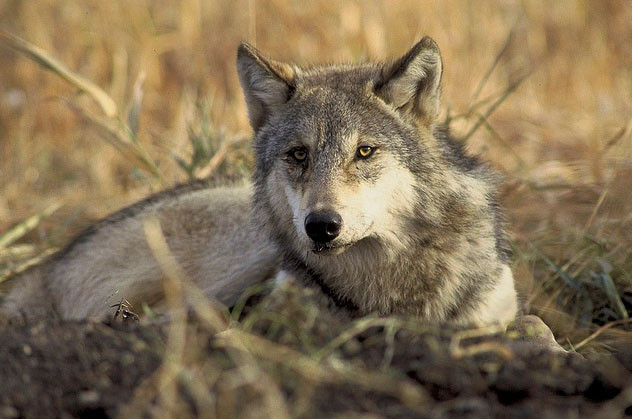New study discovers only one true wolf in North America: Gray
Red and eastern wolves are actually coyote hybrids according to study, but still deserve protections.

North America's gray wolf is the last and only indigenous wolf species on the continent, researchers have discovered, despite the long-held belief that there are three different kinds of wolves.
Even the US government currently recognises the red, eastern and gray wolf. But after researchers studied the genomes of the three types of wolves — along with coyotes —they found "no evidence for distinct eastern or red wolf species," study author and UCLA evolutionary biologist Robert Wayne told the Los Angeles Times.
Scientists found that the red wolf of the southeastern region of the US is about 25% gray wolf and 75% coyote, while the eastern wolf of central Ontario is about 75% gray wolf and 25% coyote.Scientists believe the two species began mixing hundreds of years ago in the American South and about a century ago in the Great Lakes area.
Previous studies have come up with different results, so the most recent findings could still face challenges. But the new research could be bad news for the animals. The Endangered Species Act doesn't currently recognise hybrids.
The red wolf was declared an endangered species in 1973 and 12 "pure" animals were used for captive breeding program and a population was eventually released into the wild.
Scientists are arguing that hybrids deserve protection, especially the red wolf, which is a hybrid of coyote and a type of southern gray wolf that is now extinct.
The hybrid red wolf's small size may mean it is better adapted than a pure gray wolf to life in the southeastern US. "Maybe we can't put a grey wolf in the American southeast," he said. "Maybe the top predator has to be a smaller wolf."
Other researchers believe hybrids merit protection. Roland Kays of the North Carolina Museum of Natural Sciences in Raleigh told New Scientist: "What we're finding with today's high-resolution genetic tools is that hybrids are everywhere," . "To say it's a hybrid, so it's not worth protecting, just doesn't work anymore."
The gray wolf is currently protected under the Endangered Species Act based on a traditional geographic range including the Great Lakes region and 29 eastern states. But that status is in jeopardy.
In 2014, the US Fish and Wildlife Service proposed removing the protections because it found the eastern wolf occupied that territory, which officials argued should invalidate the gray wolf listing.
But Wayne believes the animal should keep its endangered species status and be protected because the "reason for removing it is incorrect." The gray wolf does in fact live in the Great Lakes area and used to live in the 29 eastern states.
Once common throughout North America and among the world's most widespread mammals, the gray wolf is now extinct in much of the US, Mexico and Western Europe, and lives mostly in wilderness and remote areas. Gray wolves still live in the Great Lakes area — but not in the eastern states.
A decision on whether to delist the gray wolf could come this autumn (2016).
© Copyright IBTimes 2025. All rights reserved.






















